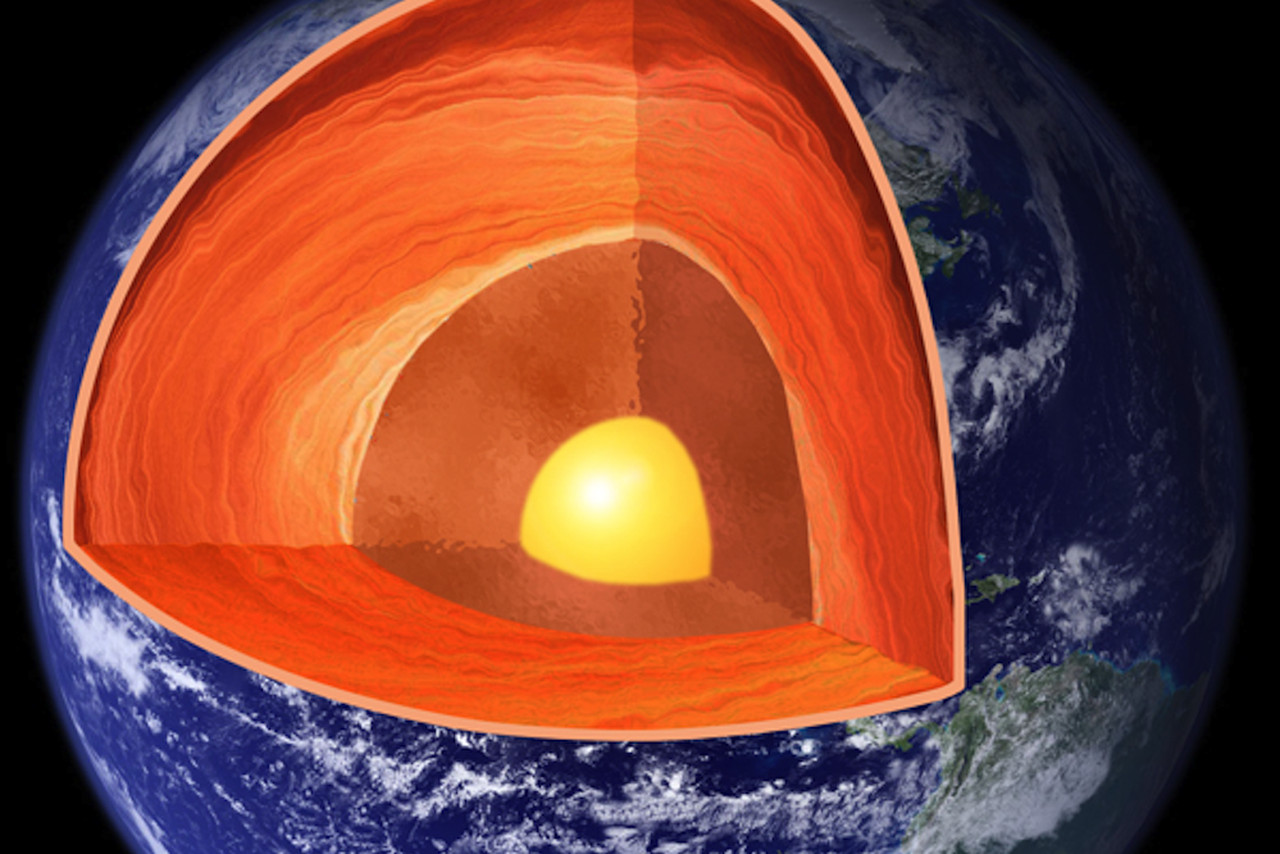The Earth, a delicate yet formidable orb, veiled in mystery, entices both the curious minds and the devoted geomorphologists alike. The surface of our planet, adorned with continents that exhibit a palimpsest of geological narratives, serves as a portal to understanding the tumultuous, fiery heart that sustains them. As we delve into the connection between these terrestrial bodies and the core’s profound influence, we unearth not merely the nature of materials and processes but also a rich tapestry of Earth’s dynamic history.
To embark on this intellectual odyssey, one must first appreciate the dichotomy between the planet’s innermost depths and its surface manifestations. At the core lies a molten nucleus, characterized by extreme temperature and pressure conditions. The outer core, which is fluid, engenders the geomagnetic dynamo responsible for Earth’s magnetic field. Just beyond, the solid inner core, comprising chiefly iron and nickel, serves as a bastion of immense density. In stark contrast, the continents float atop the viscous mantle, embodying a less turbulent, albeit complex, geological story.
Continents, the visible edifice of our planet’s crust, are the result of ceaseless evolutionary forces precipitated by activities occurring deep within the Earth. The processes that sculpt our lands—plate tectonics, volcanic activity, and erosion—find their roots in the warmth derived from the core. The exothermic reactions that transpire due to geothermic gradients within the mantle propel lithospheric plates in their slow, inexorable drift, a process that dictates not only the morphology of landscapes but also the distribution of biodiversity across the globe.
The ostensible stability of continental masses belies the turmoil of their origins. For example, the Appalachian Mountains, a venerable range in North America, formed from the collision of landmasses during the Taconic orogeny, approximately 500 million years ago. This upheaval can be traced back to movements instigated by mantle convection, where hot material from the inner regions ascends, engendering rifts that would ultimately shape mountains and valleys. Herein lies a critical inquiry: how does examining these peaks lead to an understanding of the core? The answer lies in the synthesis of geological evidence presented by such orogenic belts, which act as archives preserving the narrative of deep Earth interactions.
Volcanism provides another key insight, heralding from the same molten depths. When magma breaches the crust, it exemplifies the pathways through which the core’s warmth ascends. The formation of the Hawaiian Islands serves as an illuminating case study of hotspot volcanism. These islands bifurcate from a stationary mantle plume that supplies biogenic heat, thereby elucidating core dynamics. The trajectory of this plume over millions of years provides evidence not only of the mantle’s fluidic behavior but also posits critical questions regarding core composition and the resultant mineralogical manifestations at the surface. The exquisite complexity of igneous formations and their subsequent erosion leads us to a more nuanced understanding of the geothermal interplay.
As we traverse continents, the notion of isostasy comes to the forefront—a principle predicated on the balance of buoyancy between the crust and underlying mantle. Variations in crustal thickness and density, influenced by tectonic and volcanic processes, showcase the intricate dance between the surface and the underlying geodynamics. This equilibrium reveals the legacy of continental drift, an orchestration that reverberates through time, shaping the anatomy of our planet and serving as a reminder of core influences acting on vast scales.
The metamorphic processes further exemplify this relationship. Rocks metamorphosed through tectonic stress and temperature gradients provide vital clues to the conditions of their formation, linking surface observations to core dynamics. Fossilized evidence of once-active geothermal features, such as those found in the Sierra Nevada range, serves as a testament to the transformative powers vested in the depths of the Earth. The very rocks underfoot encapsulate the story of centuries of geological change, driven by the balancing act dictated by core mechanics.
A moment’s reflection on sedimentary basins also invites a consideration of the Earth’s fiery heart. Basins, often rich in hydrocarbons, are intimately associated with tectonic activity brought forth by core-induced changes. Their formation exemplifies the intricate interplay of deposition and erosion influenced by thermal vents alongside fault lines. The exploration of such areas leads to not just insights into resource distribution but also carries implications for our understanding of past climates and environments—highlighting yet another layer in the spectral relationship between surface features and the core.
This sweeping investigation into the connections between the core and the surface not only quenches the intellectual thirst for knowledge but also rekindles a sense of wonder about our planet. The interplay of forces creating mountains, valleys, and volcanic archipelagos speaks to the earth’s dynamic nature. This permanence amidst the ceaseless change accentuates an ancient fascination with nature’s processes, urging us to ponder our place within this grand scheme.
In conclusion, as we traverse continents and examine the geological tapestry laid before us, we cannot overlook that each rock, each mountain, and each valley tells a story rooted in the fiery heart of our planet. The Earth’s core, a cauldron of heat and energy, serves as the metaphorical pulse of the geological processes that sculpt the surface landscape. From the formation of mountains to the quiet drifts of continents, the narrative unfolds, revealing a planet in constant flux. It is a reminder not only of the power that lies beneath but also of the fragility and resilience of the world we inhabit. Our fascination with these processes fosters a deeper understanding of Earth, instilling a profound respect for the intricate web of life sustained on its surface, anchored by the hidden forces that shape it from deep below.










